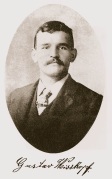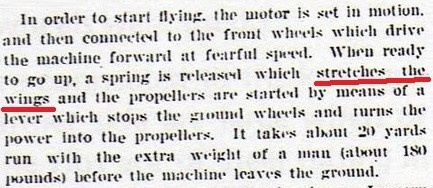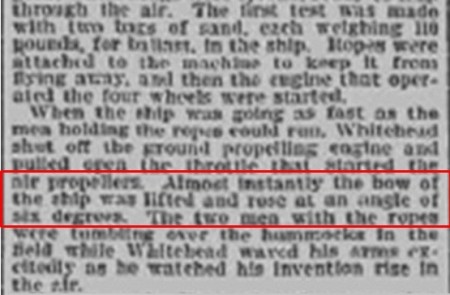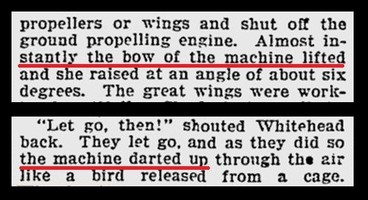Wing Surface Stretching Feature
By tightening the wing-fabric just prior to rotation, Whitehead caused his aircraft to "shoot into the air".
Whitehead repeatedly described this feature, "wing surface stretching", to journalists who, unable to comprehend it, regularly reported it wrongly, i.e. as "wing extension" or "wing expansion". Only in the article Whitehead himself authored on the cover of the April 1902 issue of American Inventor is it described comprehensibly.
Even historians sympathetic to Whitehead failed to understand this feature in the past, including the author of this website. It wasn’t until this author took up kite-surfing and paragliding (where a similar technique is used) that he finally understood what Whitehead had been referring to.
In this context, criticism by the German historians Schwipps/Holzer is understandable. They ridiculed how Whitehead’s wings „extended“ prior to takeoff (Flugpionier Gustav Weißkopf, p.108), thereby confusing the English words “extended” and „stretched“. Elsewhere in their book, they ridiculed what they alleged was Whitehead's poor knowledge of English (ibid, p.25).)
1902-04, American Inventor, pp.1&2
1901-11-19, New York Evening Telegram, p.10
Bridgeport Sunday Herlad, August 18, 1901
The eyewitness report by Richard Howell describes how the simultaneous transfer of the ground engine's pressure to the propeller-engine coupled with the tightening of the wings' airfoil caused the aircraft to "jump into the air".






